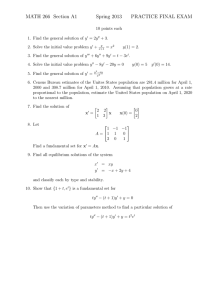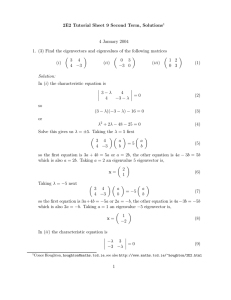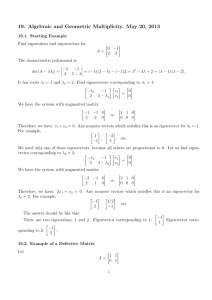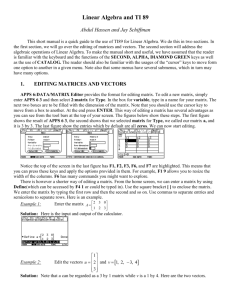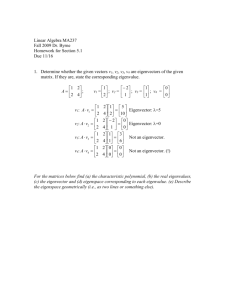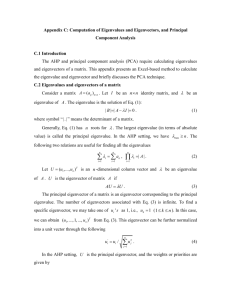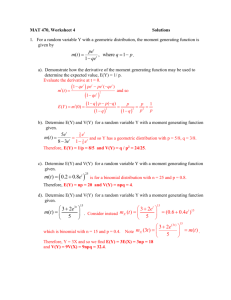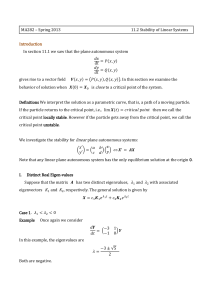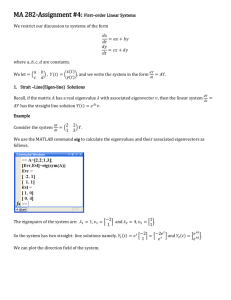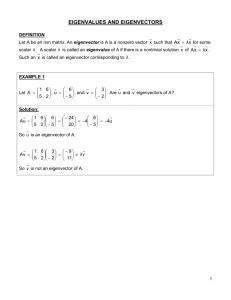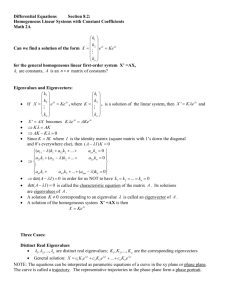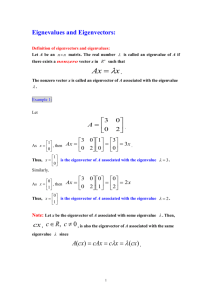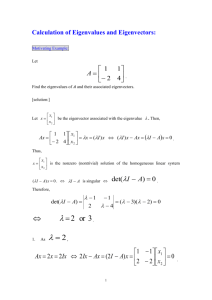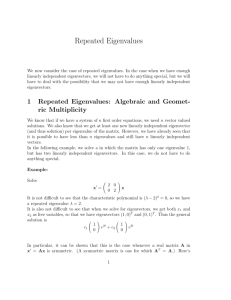For differential equations
advertisement
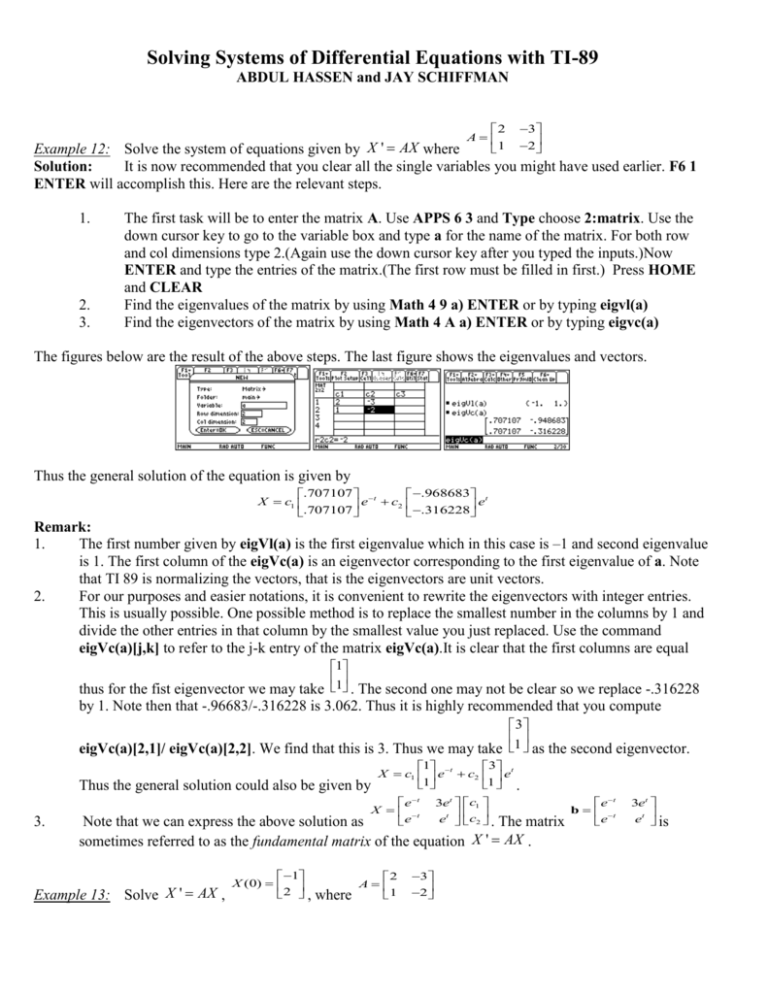
Solving Systems of Differential Equations with TI-89 ABDUL HASSEN and JAY SCHIFFMAN 2 A 1 3 2 Example 12: Solve the system of equations given by X ' AX where Solution: It is now recommended that you clear all the single variables you might have used earlier. F6 1 ENTER will accomplish this. Here are the relevant steps. 1. 2. 3. The first task will be to enter the matrix A. Use APPS 6 3 and Type choose 2:matrix. Use the down cursor key to go to the variable box and type a for the name of the matrix. For both row and col dimensions type 2.(Again use the down cursor key after you typed the inputs.)Now ENTER and type the entries of the matrix.(The first row must be filled in first.) Press HOME and CLEAR Find the eigenvalues of the matrix by using Math 4 9 a) ENTER or by typing eigvl(a) Find the eigenvectors of the matrix by using Math 4 A a) ENTER or by typing eigvc(a) The figures below are the result of the above steps. The last figure shows the eigenvalues and vectors. Thus the general solution of the equation is given by .707107 t .968683 t X c1 e c2 .316228 e .707107 Remark: 1. The first number given by eigVl(a) is the first eigenvalue which in this case is –1 and second eigenvalue is 1. The first column of the eigVc(a) is an eigenvector corresponding to the first eigenvalue of a. Note that TI 89 is normalizing the vectors, that is the eigenvectors are unit vectors. 2. For our purposes and easier notations, it is convenient to rewrite the eigenvectors with integer entries. This is usually possible. One possible method is to replace the smallest number in the columns by 1 and divide the other entries in that column by the smallest value you just replaced. Use the command eigVc(a)[j,k] to refer to the j-k entry of the matrix eigVc(a).It is clear that the first columns are equal 1 1 . thus for the fist eigenvector we may take The second one may not be clear so we replace -.316228 by 1. Note then that -.96683/-.316228 is 3.062. Thus it is highly recommended that you compute 3 eigVc(a)[2,1]/ eigVc(a)[2,2]. We find that this is 3. Thus we may take 1 as the second eigenvector. Thus the general solution could also be given by 3. 1 X c1 e t c2 1 et X t e 3 t 1 e . 3et c1 et c2 . Note that we can express the above solution as The matrix sometimes referred to as the fundamental matrix of the equation X ' AX . Example 13: Solve X ' AX , 1 X (0) 2 , where 2 A 1 3 2 e t b t e 3et et is Solution: As in Example 12 we solve X ' AX and express the answer in the form given in Remark 3 e t t above. All we have to do now is solve the system of equations e et t e 3et c1 1 et c2 2 after substituting t=0. 1 2 as 3et et into To this end we enter the matrix the calculator as b. and d. Then we compute the command rref(augment((b|t=0),d)). The last column of this row reduced echelon form matrix gives the solution for c1 and c2 . rref and augment can be accessed from Math 4 4 and Math 4 7, respectively. et 2 F A t and 1 Example 14: Solve X ' AX F , where 3 2 c c 1 c2 . let Solution: Let b be as in Example and Then the general solution to the system is given by 1 X b c b (b f )dt b (b 1 f )dt . Enter F as f and execute the command . For , use F3 2 or 2nd 7. Here are the figures for these steps. Therefore the general solution is given by et X t e 3t 1 t e 3t 2 4 3et c1 et c2 t 1 t e 2 t 1 2 4 1 X (0) 2 , et F t 2 A 1 3 2 . Example 15: Solve X ' AX F , where and Solution: We will use the notations of Examples 13 and 14. The solution is then given by the formula: t X b (b (0)) d b (b 1 ( s ) f ( s ))ds 1 0 We now need to Define b^(-1) and f as functions of s rather than as functions of t. We will use e and g, for b^(1) and f, respectively. Here is a partial picture. 3tet 25et 21et tet 9et 21et X 3t , 2t 1 4 4 2 4 4 2 The solution is
